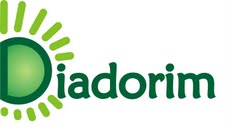PARSEC PARAMETERIZATION METHODOLOGY FOR ENHANCING AIRFOILS GEOMETRY USING PSO ALGORITHM
DOI:
https://doi.org/10.26512/ripe.v2i9.15031Abstract
The electromechanical generating system is mainly based on the characteristics wherein the turbine has to ”harvest” the energy of a working fluid. Thus, the engineering behind the blades, such as the geometry and construction, must be effectively consolidated to increase the overall turbine efficiency. This work aims to go further into the computational principles of modeling the turbine blades, precisely, the hydrokinetic turbine hydrofoil built by LEA (Engineering Laboratory and Environment - UNB). The study has a focus on designing and analyzing, through numerical studies of parameterization and optimization profiles, blades using computational tools such as MATLAB R2016b and XFOIL. In this case, the model study is part of the airfoil theory combined with the Particle Swarm Optimization technic (PSO), which are implemented to get a maximum utilization of the aerodynamic coefficient CL over CD of the blade. Furthermore, an optimal turbine blade geometry, set by PARSEC parameter, is found and compared with results obtained from the original hydrofoil, using the software of profile analysis XFOIL, to certify the mathematical method, proving its effectiveness to parameterize hydrodynamic profiles and optimize their geometries.
Keywords: Hydrokinetic Turbine. Airfoils. Parameterization and Optimization. Parsec. PSO.
Downloads
References
CONSENTINO GARY B HOLST, T. L. Numerical optimization design of advanced transonic wing configuration. Jornal of Aircraft, v. 23, n. 3, p. 192?199, 1986..
DRELA, M. Xfoil: An analysis and design system for low reynolds number airfoils. In: Low Reynolds number aerodynamics. [S.l.]: Springer, 1989. p. 1?12.
ELS, R. H. V. et al. Hydrokinetic propeller type turbine for the electrification of isolated householders or community and social end-users. In: 17 Congresso de Engenharia Mecnica. [S.l.: s.n.], 2003.
GRANT, I. Basic concepts in turbomachinery. In: Ventus Publishing ApS. [S.l.: s.n.], 2009. v. 1, p. 1?144. ISBN 978-87-7681-435-9.
HU, XIAOHUI PSO: Tutorial. 2006. Available in: <http://www.swarmintelligence.org/tutorials.php>.
KULFAN, B. M.; BUSSOLETTI, J. E. et al. Fundamental parametric geometry representations for aircraft component shapes. In: Machine Learning: ECML-93. [S.l.: s.n.], 2006.
Li, Wu and Padula Sharon, 2004 ”Using Resolution Design Spaces for Aerodynamic Shape Optimization Under Ucertainty”,NASA /TB-2004-213003.
SOBIECZY, H. Parametric airfoils and wings. In: Recent Development of Aerodynamic Design Methodologies. [S.l.]: Springer, 1998.
SHOENBERG, I. J. Contributions to the problem of approximation of equidistant data by analytic functions. In: IJ Schoenberg Selected Papers. [S.l.]: Springer, 1988. p. 3?57.
Downloads
Published
How to Cite
Issue
Section
License
Given the public access policy of the journal, the use of the published texts is free, with the obligation of recognizing the original authorship and the first publication in this journal. The authors of the published contributions are entirely and exclusively responsible for their contents.
1. The authors authorize the publication of the article in this journal.
2. The authors guarantee that the contribution is original, and take full responsibility for its content in case of impugnation by third parties.
3. The authors guarantee that the contribution is not under evaluation in another journal.
4. The authors keep the copyright and convey to the journal the right of first publication, the work being licensed under a Creative Commons Attribution License-BY.
5. The authors are allowed and stimulated to publicize and distribute their work on-line after the publication in the journal.
6. The authors of the approved works authorize the journal to distribute their content, after publication, for reproduction in content indexes, virtual libraries and similars.
7. The editors reserve the right to make adjustments to the text and to adequate the article to the editorial rules of the journal.









